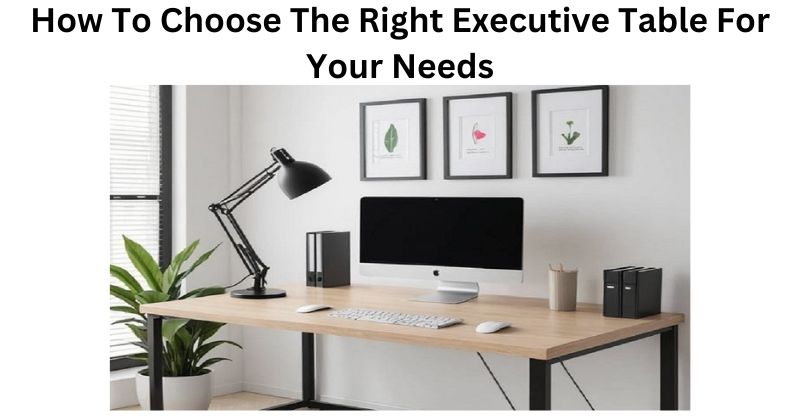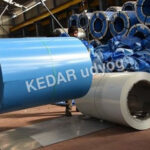Choosing the best executive table involves considering various factors that blend functionality, style, and practicality. Whether you’re furnishing a home office or a corporate workspace, the executive table serves as the focal point of productivity and professionalism. Here’s a comprehensive guide to help you navigate through the process:
1. Space Considerations
Begin by assessing the available space where the executive table will be placed. Measure the dimensions carefully to ensure the table fits comfortably without overcrowding the room. Consider the layout of the room and how the table will integrate with other furniture and equipment.
-
Room Size: A larger room can accommodate a more substantial desk, whereas a compact space may require a sleeker design to avoid overwhelming the area.
-
Shape: Choose between rectangular, L-shaped, or U-shaped desks based on your space and workflow requirements.
2. Functionality and Ergonomics
An executive table should enhance productivity and comfort. Ergonomic considerations are crucial, especially if you spend long hours at the desk:
-
Height: Opt for an adjustable desk or ensure the desk height is suitable for your chair to prevent strain.
-
Storage: Consider the need for drawers, shelves, or integrated filing systems based on your organizational needs.
-
Cable Management: Look for desks with built-in cable management solutions to keep wires tidy and accessible.
3. Material and Durability
The material of the desk affects both its aesthetics and durability. Common materials include:
-
Wood: Provides a classic, sophisticated look and is durable. Options like oak, cherry, or walnut offer varying aesthetics.
-
Metal: Offers a modern, industrial look and is usually lightweight and durable.
-
Glass: Adds a contemporary touch but may require more maintenance to keep clean.
Choose a material that complements your office decor while considering its longevity and maintenance requirements.
4. Style and Aesthetics
The style of the executive table should reflect your personal taste and the overall ambiance of your workspace:
-
Traditional: Features ornate designs, rich wood finishes, and often includes details like carved legs or molding.
-
Modern/Contemporary: Clean lines, minimalist designs, and often incorporates materials like glass, metal, or sleek wood finishes.
-
Transitional: Blends elements of traditional and modern styles for a timeless appeal.
Consider the existing decor of your office or home to ensure the desk complements the overall look.
5. Budget Considerations
Executive tables come in a wide range of prices depending on size, materials, and features:
-
Investment: Higher-quality materials and craftsmanship often come with a higher price tag but offer durability and aesthetic appeal.
-
Budget-friendly: Look for desks that offer essential features without compromising too much on quality.
-
Set a budget range and explore options within that range to find the best balance between cost and quality.
6. Additional Features
Depending on your needs and preferences, consider additional features that can enhance the functionality of your executive table:
-
Built-in Lighting: Some desks come with integrated lighting options for better visibility.
-
Adjustable Features: Desks with height-adjustable or tilt-adjustable features can provide added comfort.
-
Modular Options: If flexibility is crucial, look for desks that can be expanded or rearranged to suit changing needs.
7. Brand Reputation and Reviews
Research different brands and read customer reviews to gauge the quality and reliability of the desks you’re considering. A reputable brand with positive reviews is more likely to provide a durable and well-designed executive table.
8. Assembly and Maintenance
Consider how easy the desk is to assemble and maintain. Some desks require professional assembly, while others can be easily put together with minimal tools. Maintenance requirements such as cleaning and care instructions should also be considered to ensure the desk remains in good condition over time.
Conclusion
Choosing the right executive table involves balancing practical considerations like space and functionality with aesthetic preferences and budget constraints. By carefully evaluating these factors and exploring different options, you can find an executive table that enhances your workspace, promotes productivity, and reflects your personal style. Whether you prefer a traditional wooden desk or a modern glass-top design, prioritizing quality and comfort ensures that your investment in an executive table pays off in the long run. For more insightful articles related to this topic, feel free to visit – https://www.guestpostinc.com/



